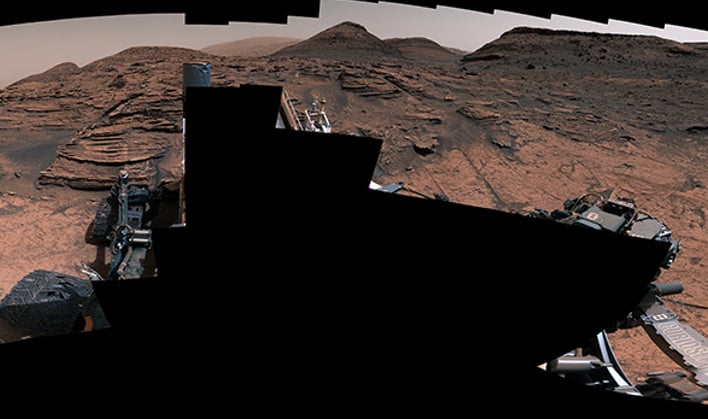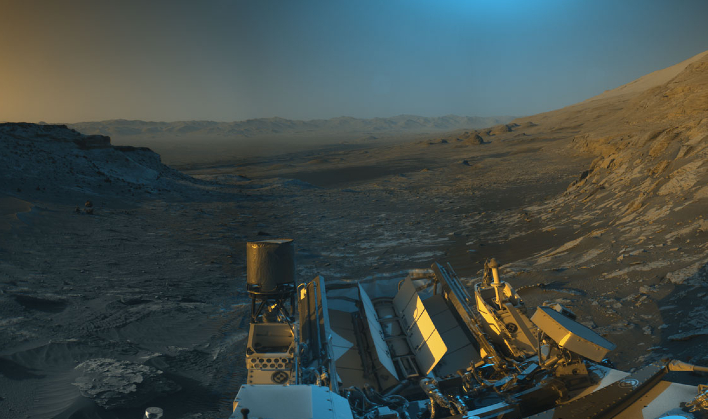NASA's Curiosity Rover Has Delivered Us A Decade Of Science, Here's What It Has Taught Us
It may seem hard to believe that Curiosity has been on Mars for ten years already, but as they say "Time flies when you are having fun." The SUV-sized explorer began its pursuit of life on Mars on August 8, 2012, and has since driven nearly 18 miles and ascended 2,050 feet (625 meters) as it makes its way through Gale Crater. While the spacecraft has begun to show signs of wear and tear, NASA has extended its mission life another three years.
The rover's exploration and extent of exploring Mars has not been limited to the planet's surface. It has also captured images of the planet's skies, sharing images of shining clouds and drifting moons. One very important detail the rover has given scientists back on Earth, is about the amount of high-energy radiation that future astronauts would be exposed to on the Red Planet. This is vital information for future missions that will send humankind to Mars.
However, what scientists were hoping to prove with Curiosity pertains to whether or not the Red Planet was ever host to life. The spacecraft has in fact determined that liquid water, as well as the building blocks and nutrients needed for supporting life, were at one time present on the rocky planet for at least tens of millions of years in the Gale Crater. Research has determined that Gale Crater was once the home of a lake, which differed in size over time.
The Mars rover is now trekking through a canyon that marks the transition to a new area, which is believed to have formed as water was drying out, leaving sulfates.
"We're seeing evidence of dramatic changes in the ancient Martian climate," remarked Ashwin Vasavada, Curiosity's project scientist at NASA's Jet Propulsion Laboratory in Southern California. "The question now is whether the habitable conditions that Curiosity has found up to now persisted through these changes. Did they disappear, never to return, or did they come and go over millions of years."

Some may wonder how NASA has been able to keep Curiosity in good working condition over the last decade. That feat has been accomplished by a team of hundreds of dedicated engineers working with JPL and remotely from home.
This large group catalogs "every crack in the wheels, test every line of computer code before it's beamed into space, and drill into endless rock samples in JPL's Mars Yard," all in order to be positive that Curiosity can safely do the same.

Some of the many discoveries the rover has revealed include evidence of persistent liquid water in the past, organic compounds in Mars rocks, present and active methane in Mars' atmosphere, and the radiation in the atmosphere that could pose risks to humans in future missions.
As Curiosity continues its mission over the next few years, the team back here on Earth will continue to monitor its wear and tear, along with its slowly diminishing power. The rover relies on a long-lived nuclear-powered battery rather than solar panels to keep it moving. Due to the decay of the plutonium pellets in the battery, the rover can no longer do as much during the day as it once was able to. This has led the team to find ways to multi-task where they find opportunities to do so.
With so many different NASA missions, it can be easy to forget about those that have been going on for so long. But Curiosity, and its team of engineers are determined to keep getting all they can from the rover while they still can.
Top Image Credit: NASA/JPL


